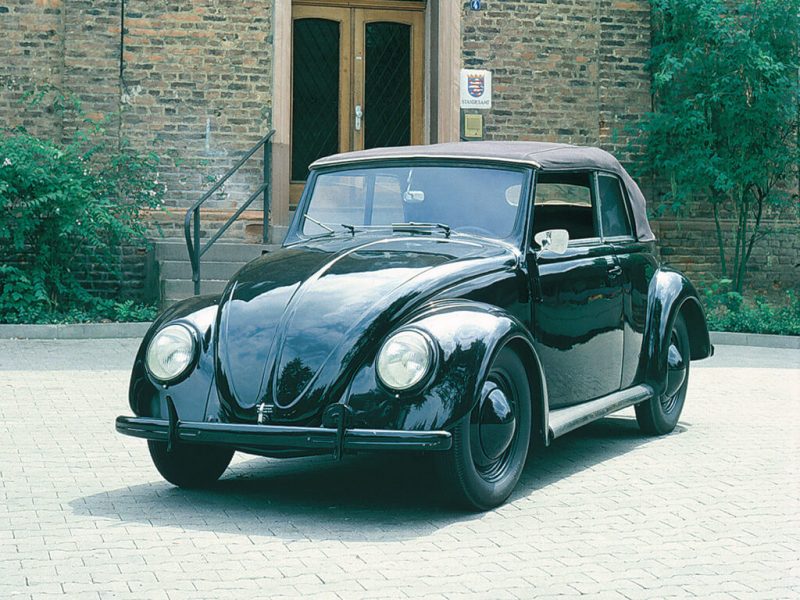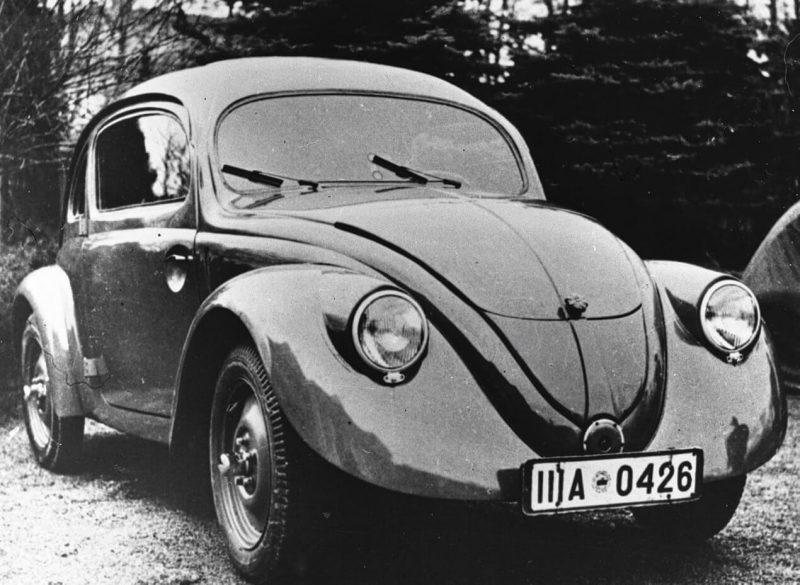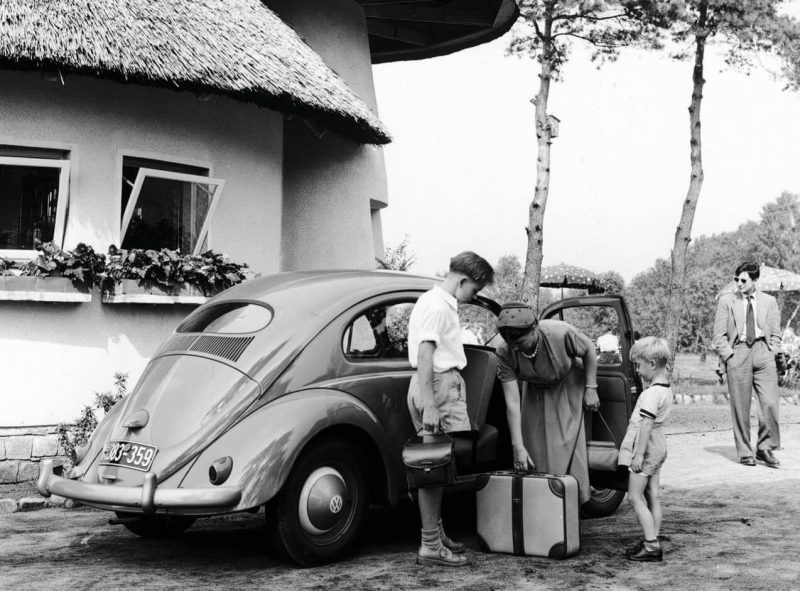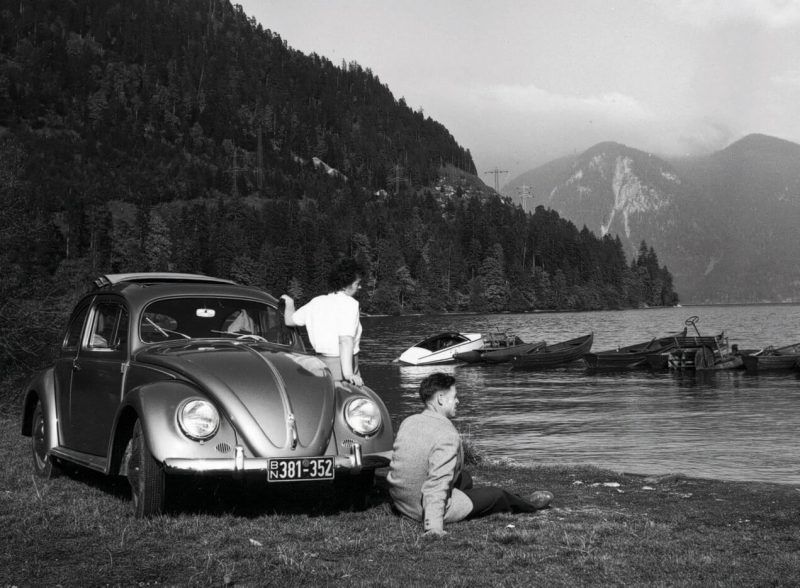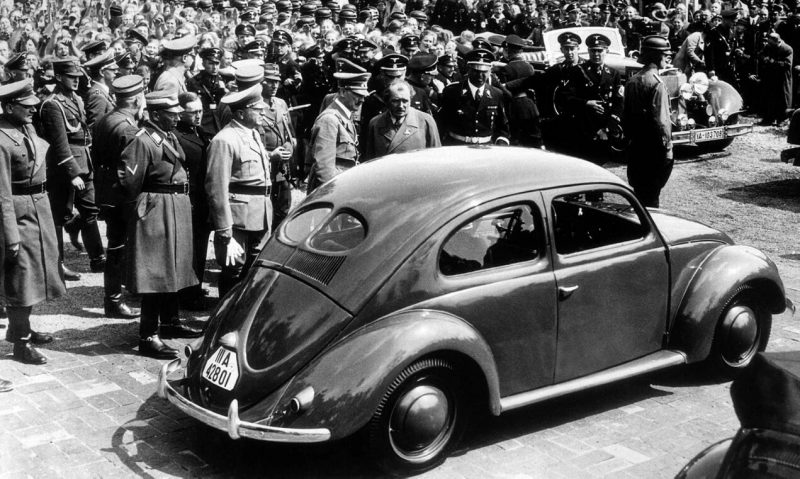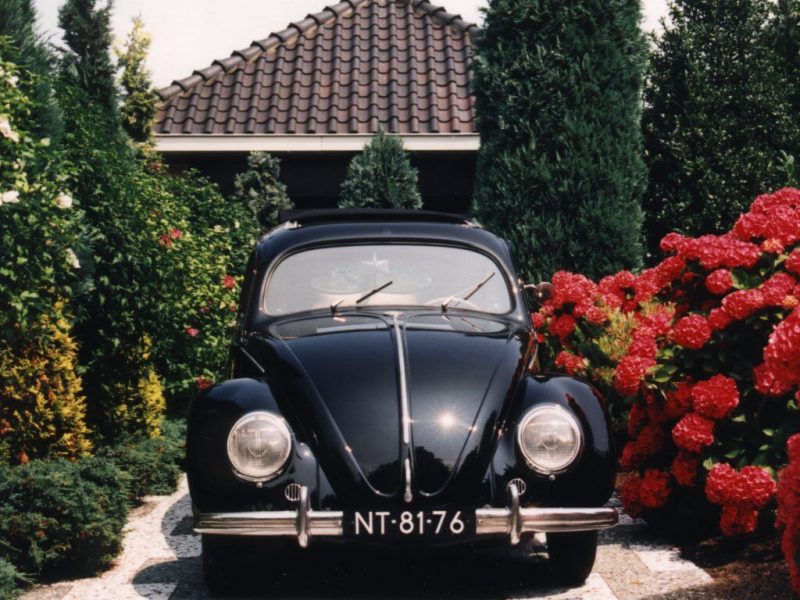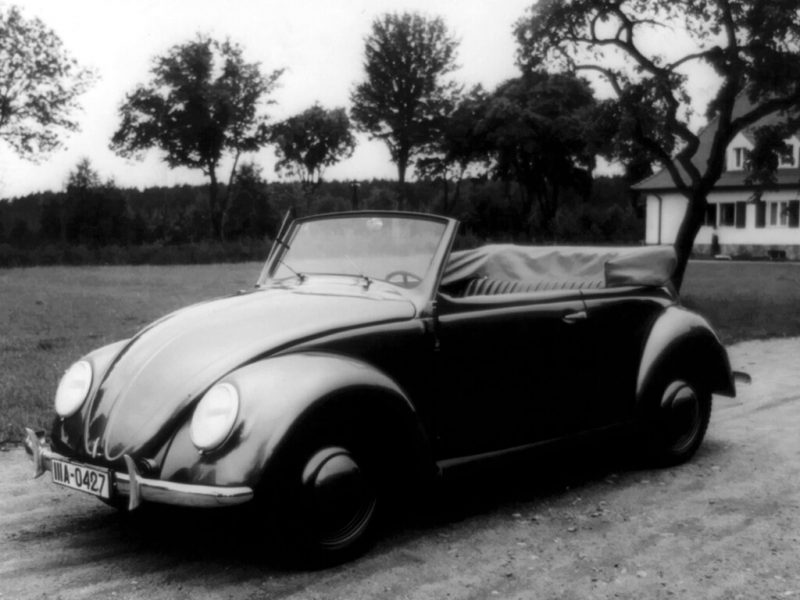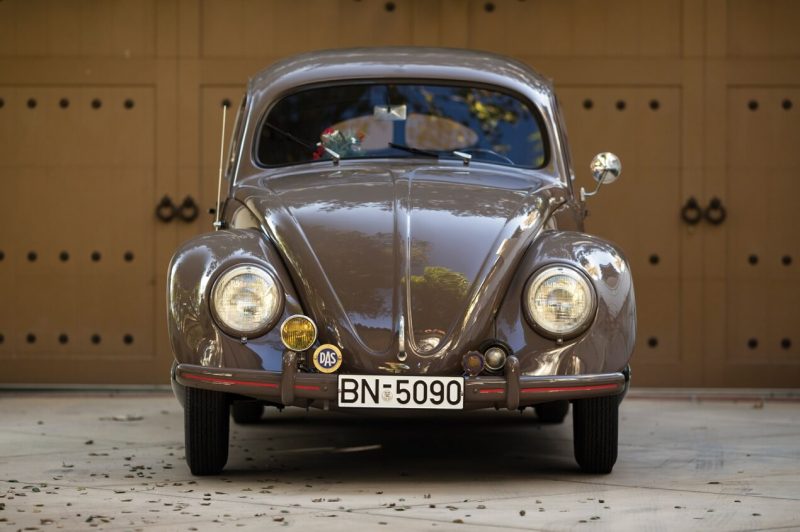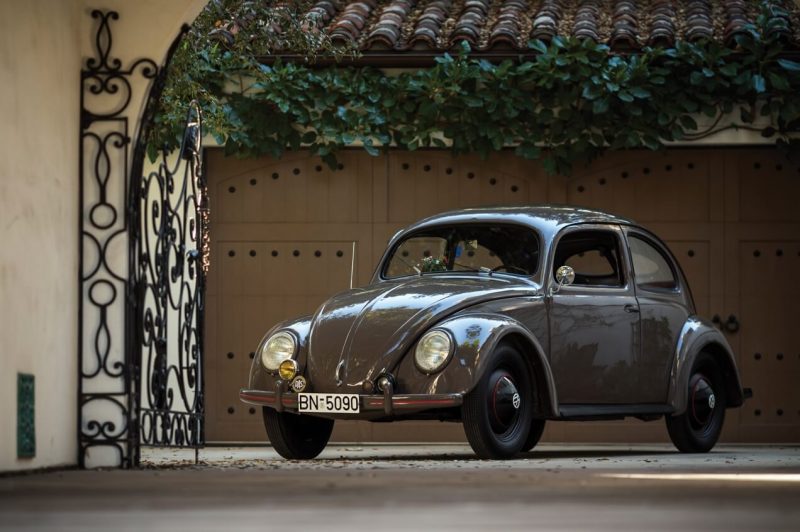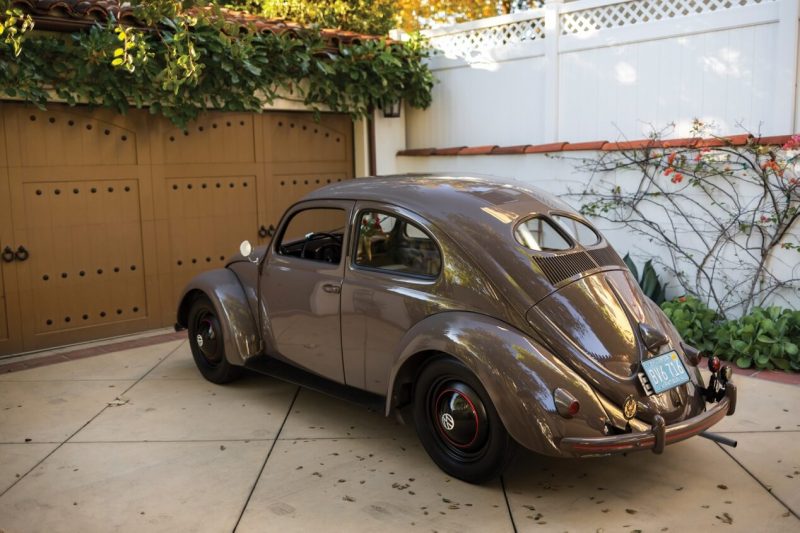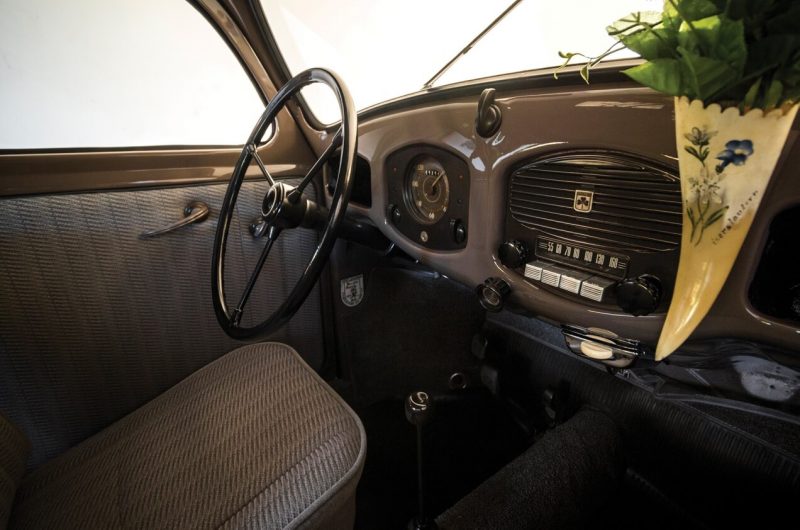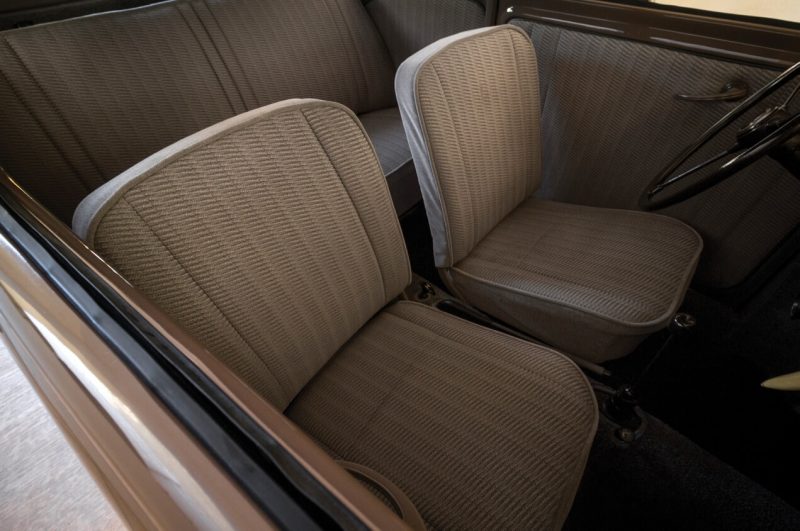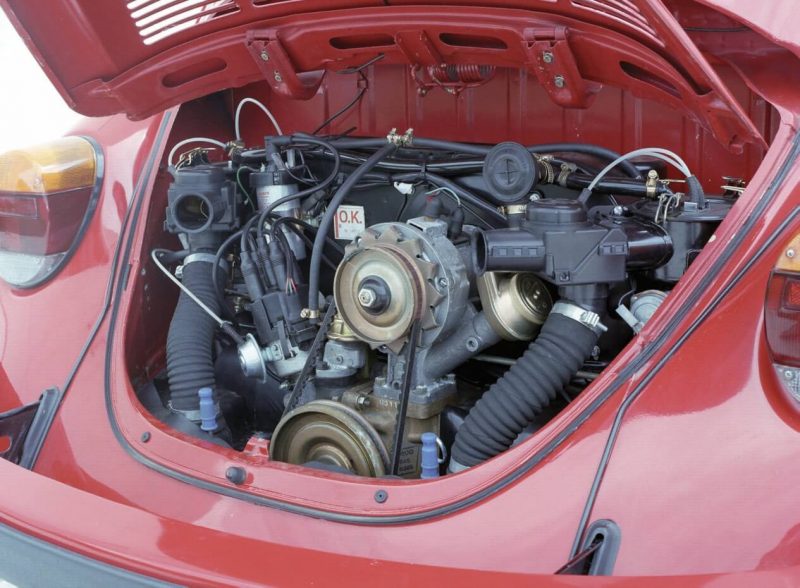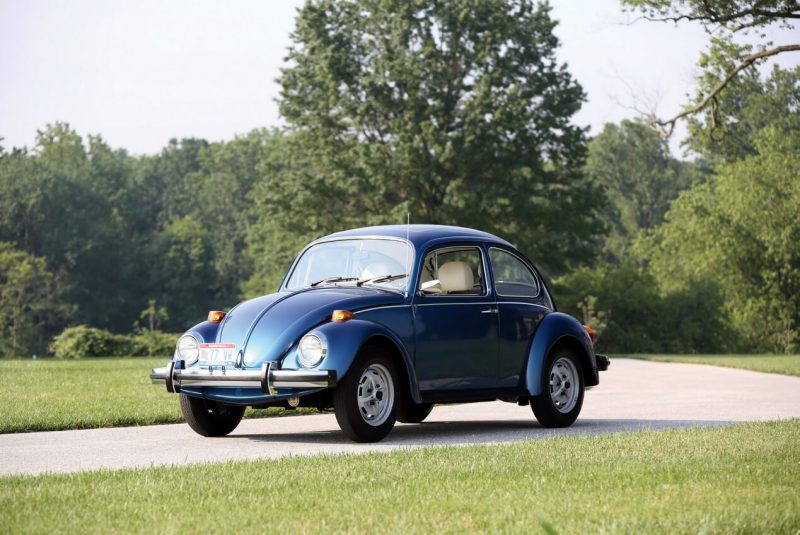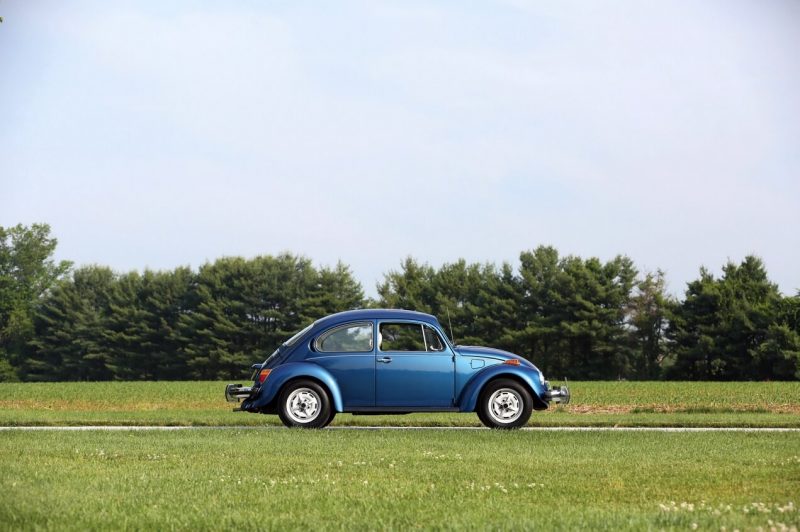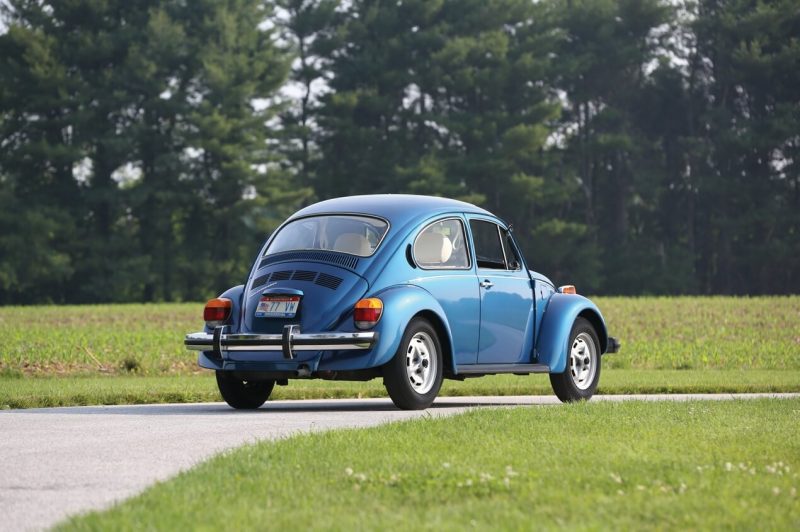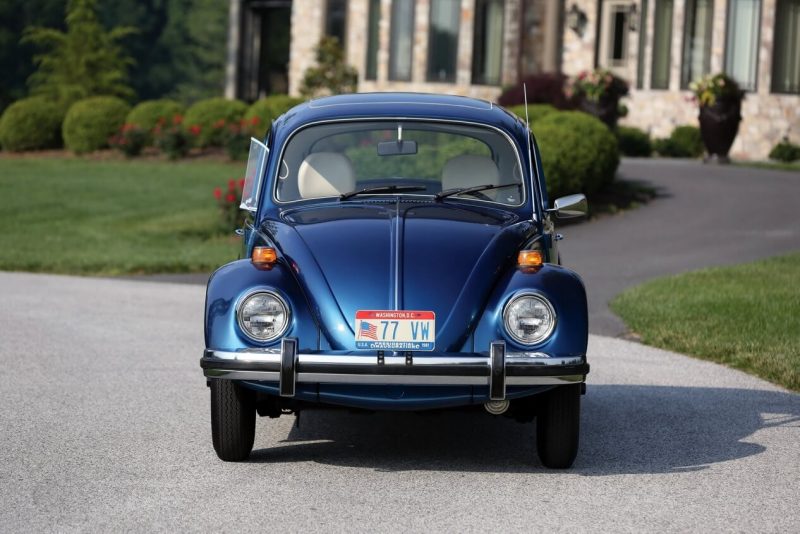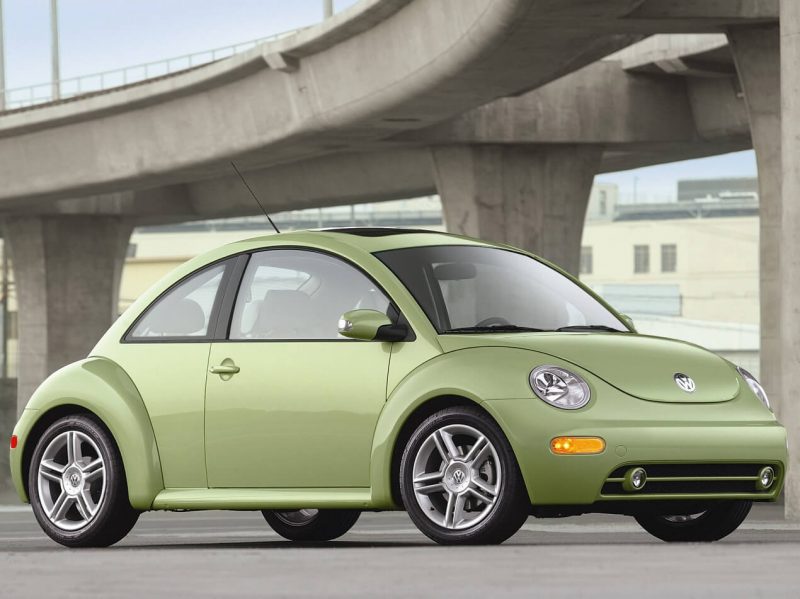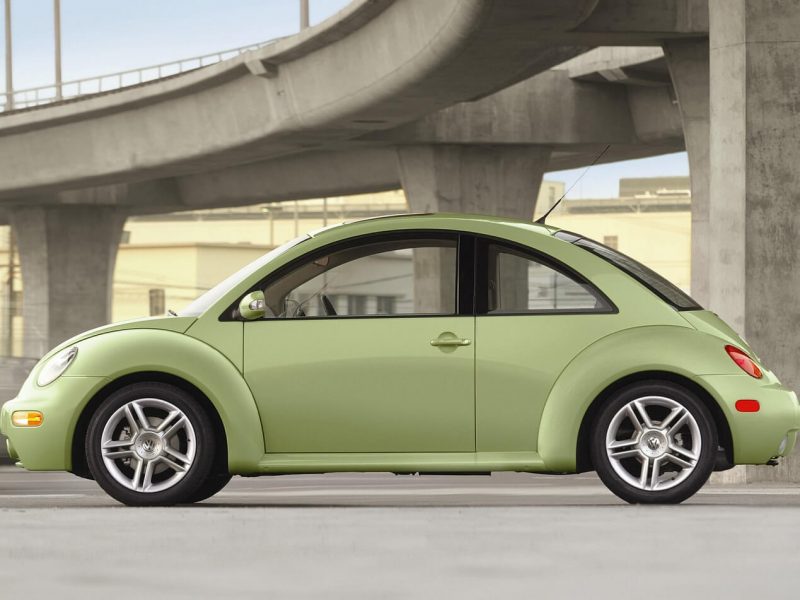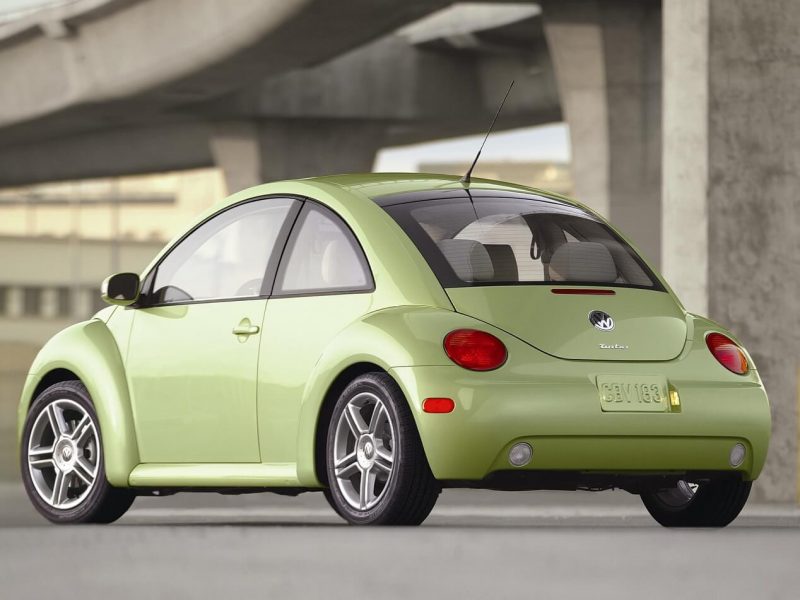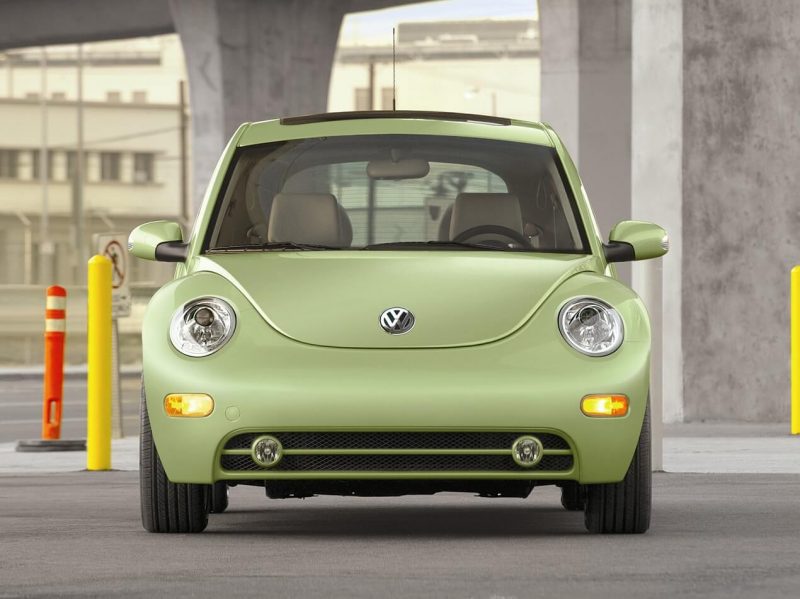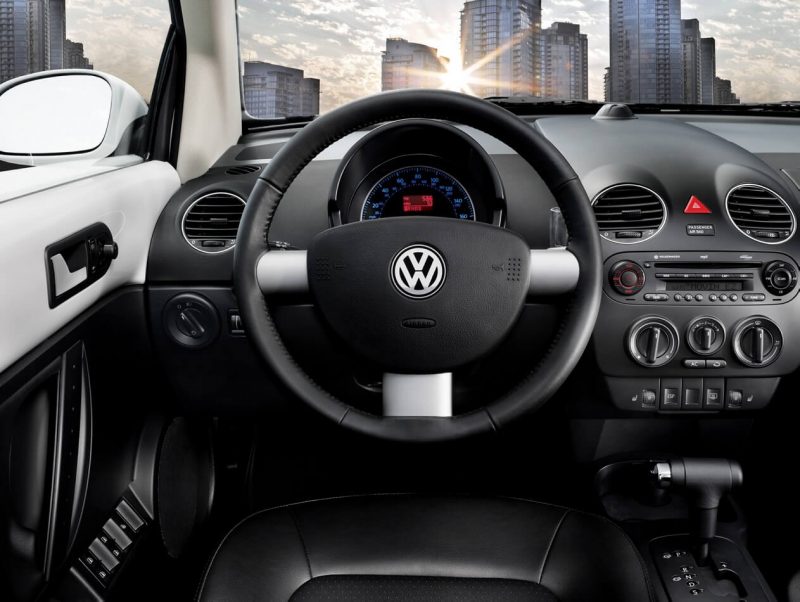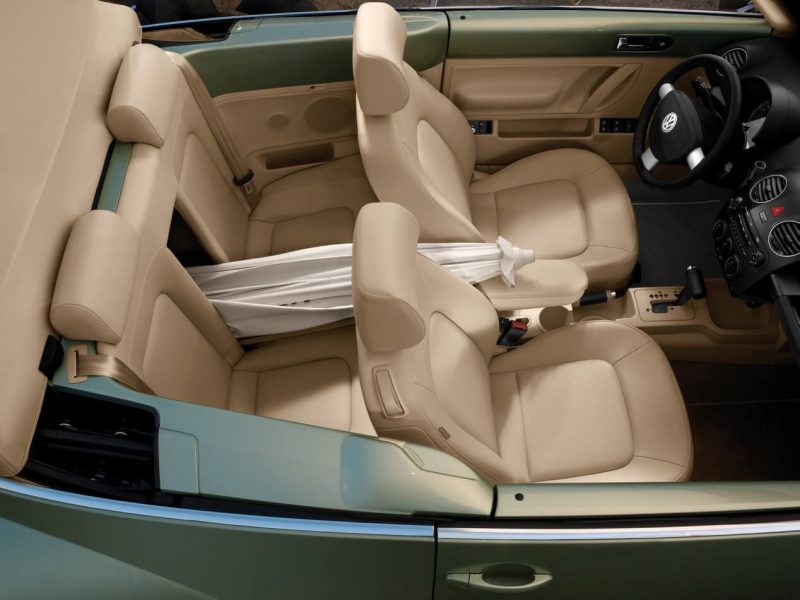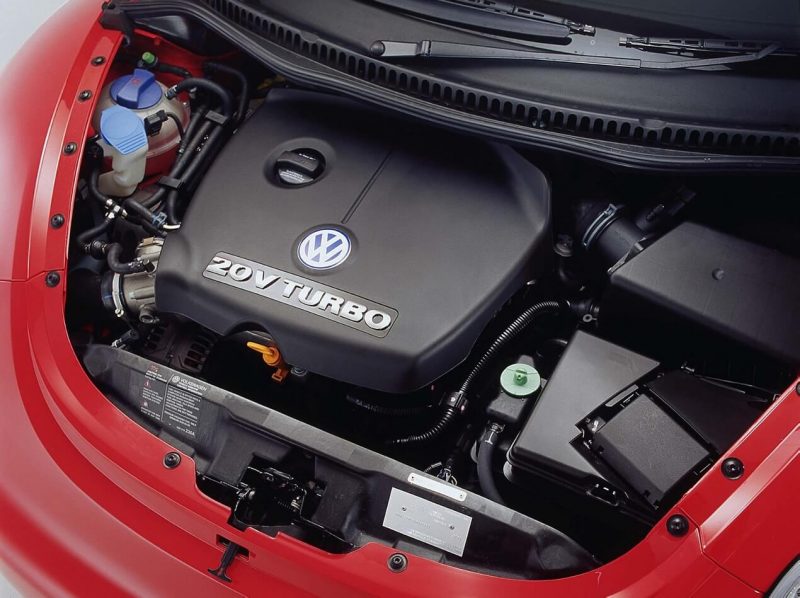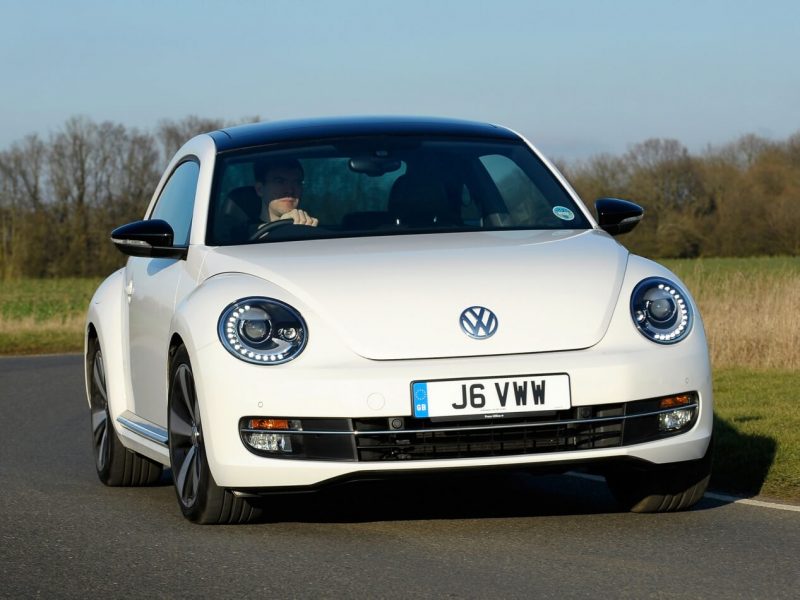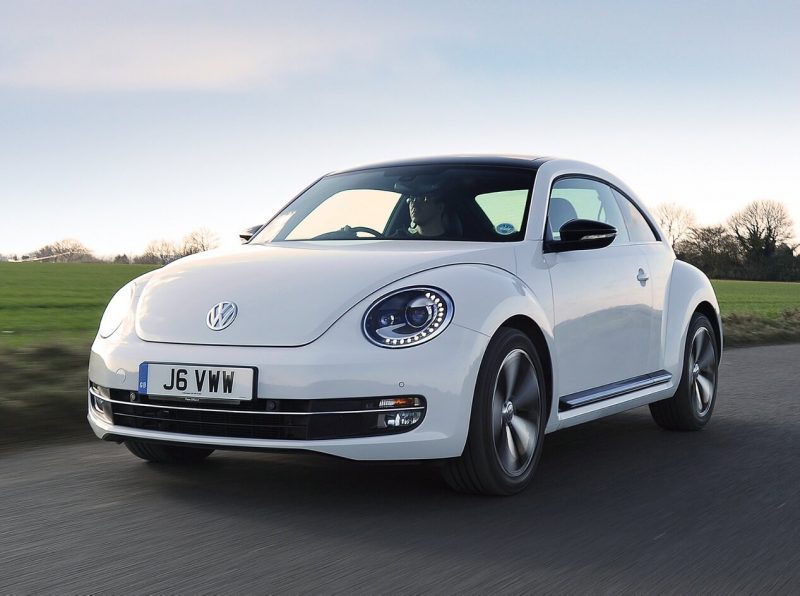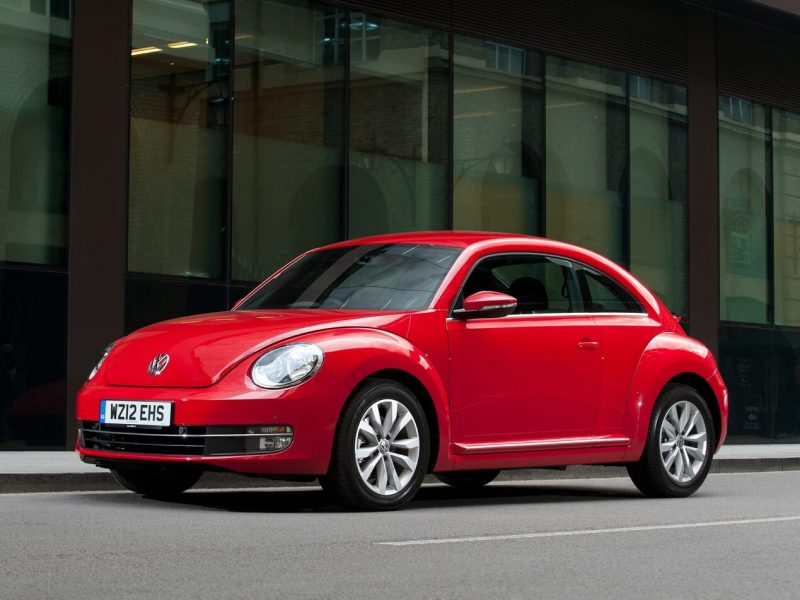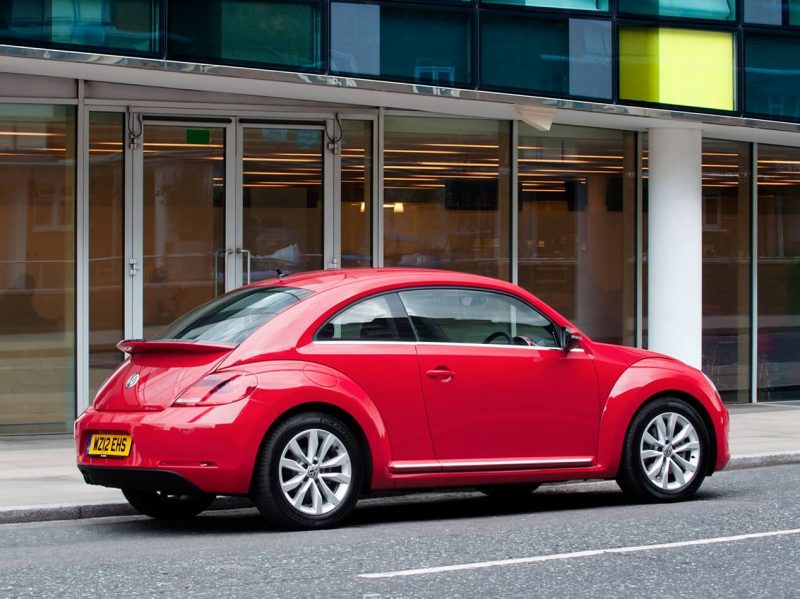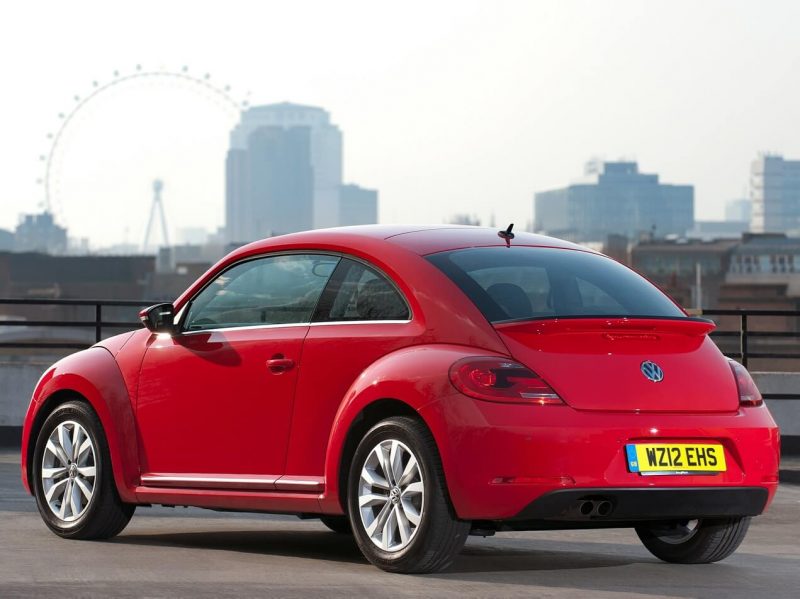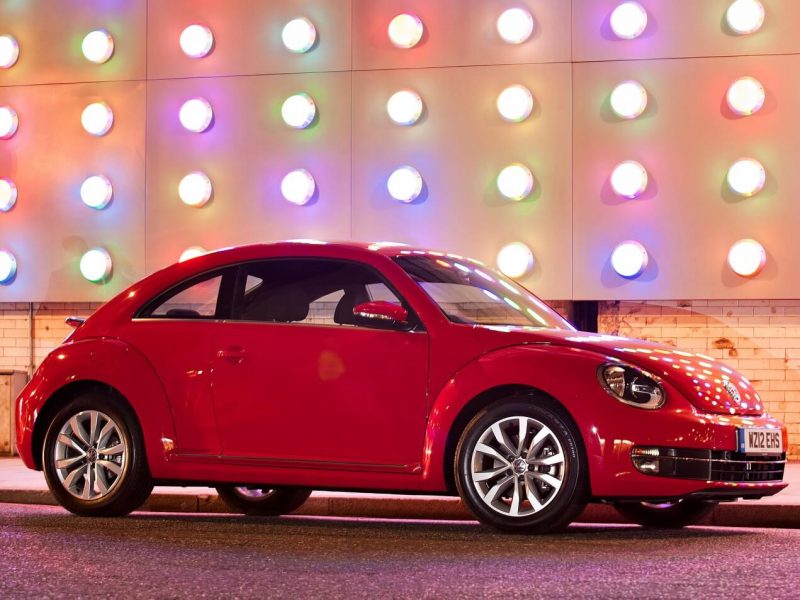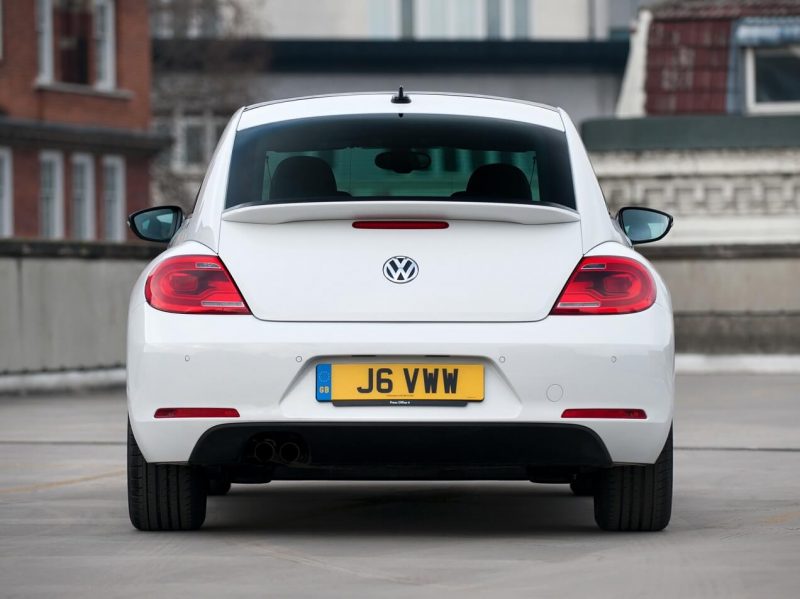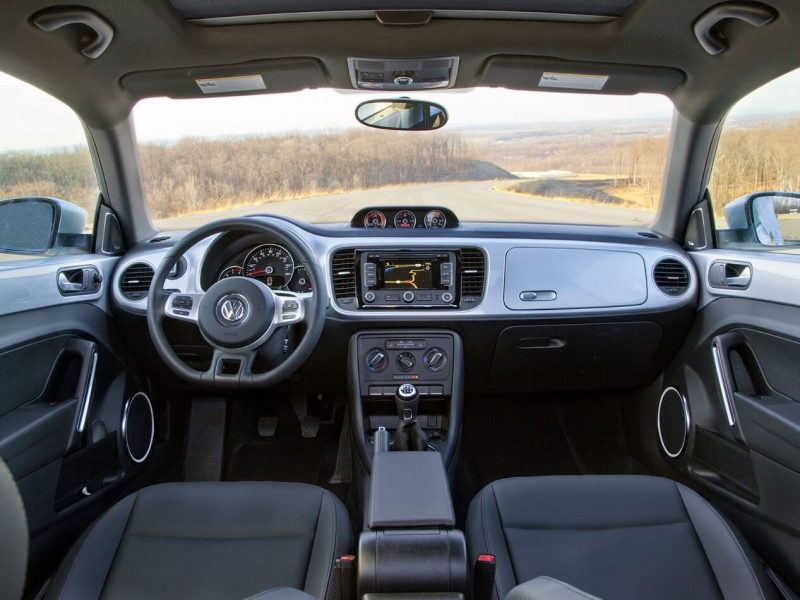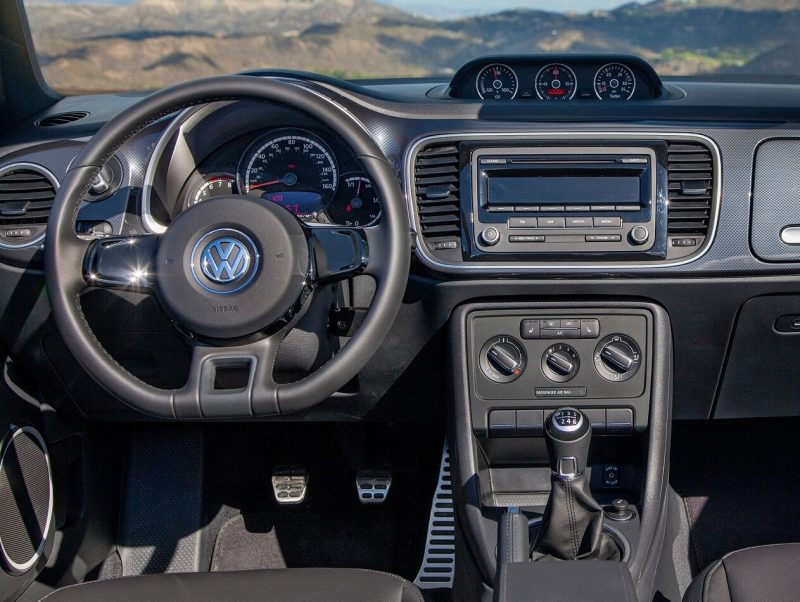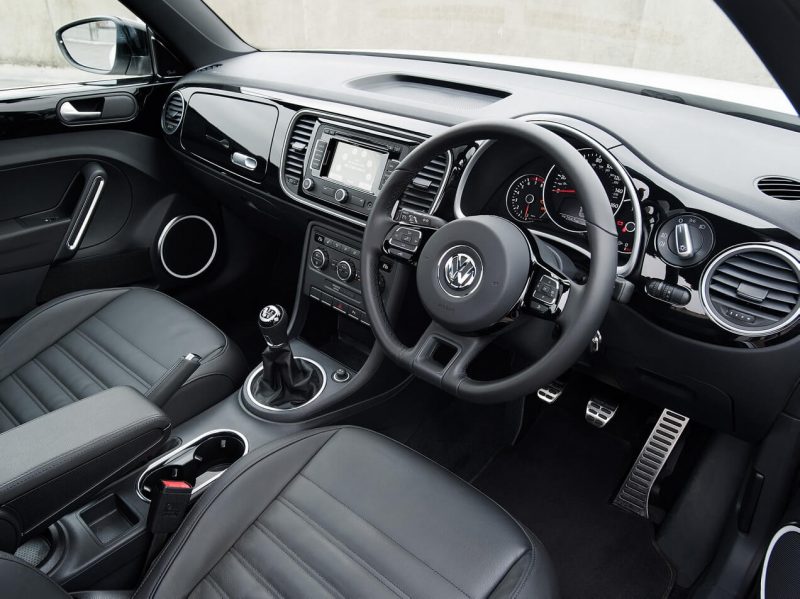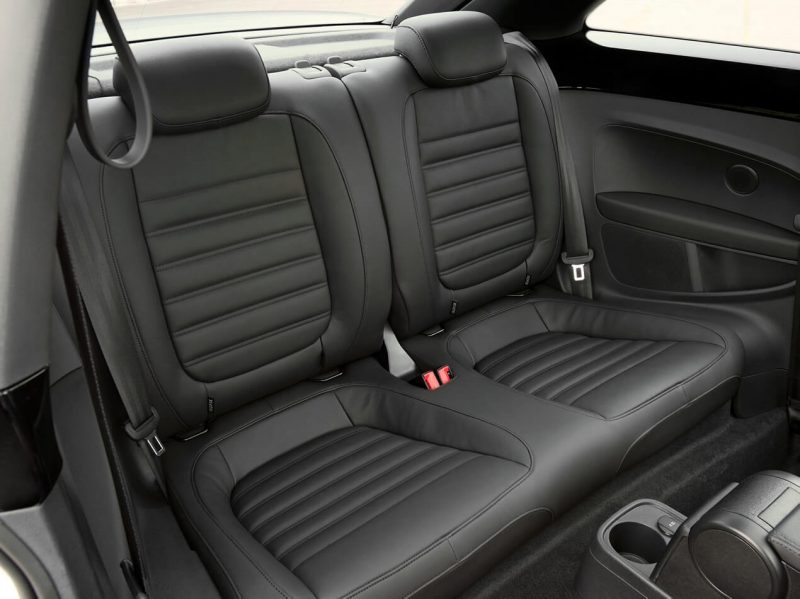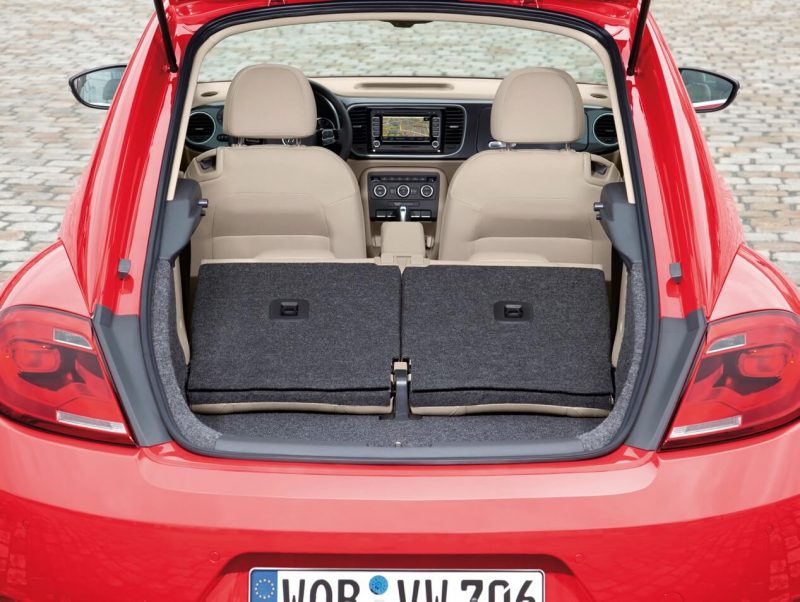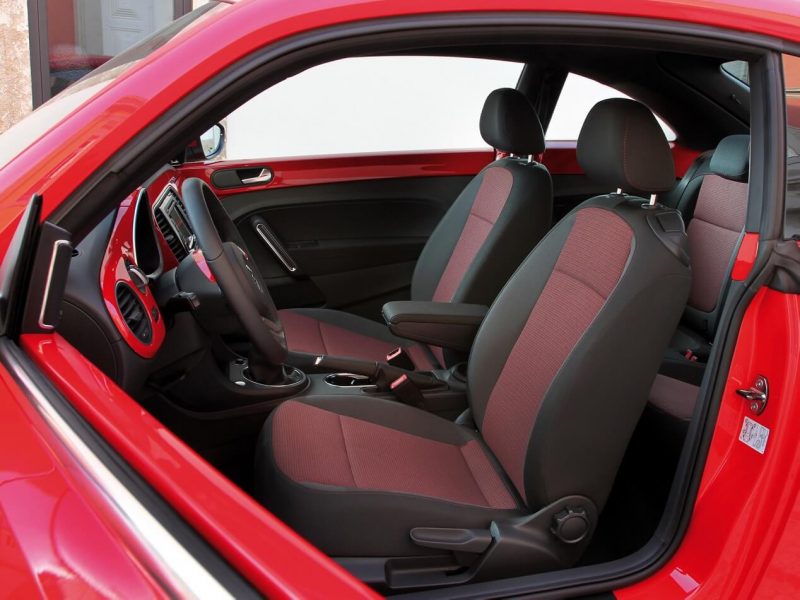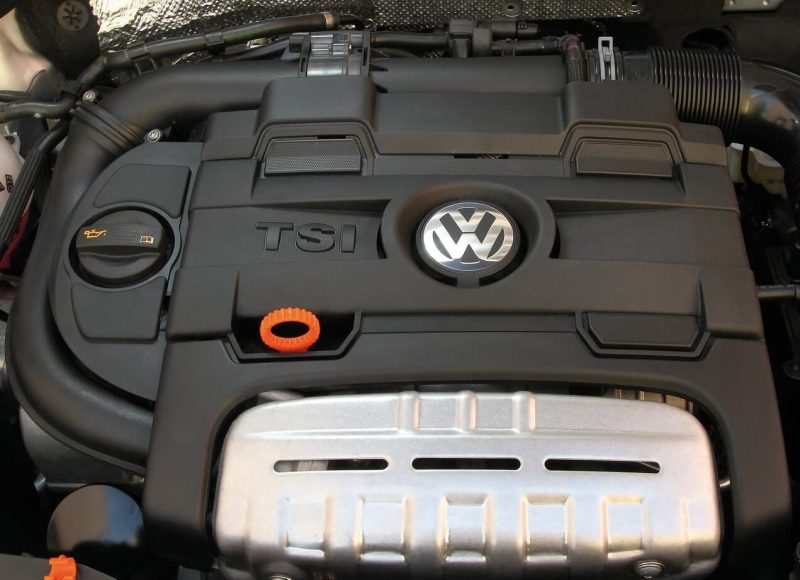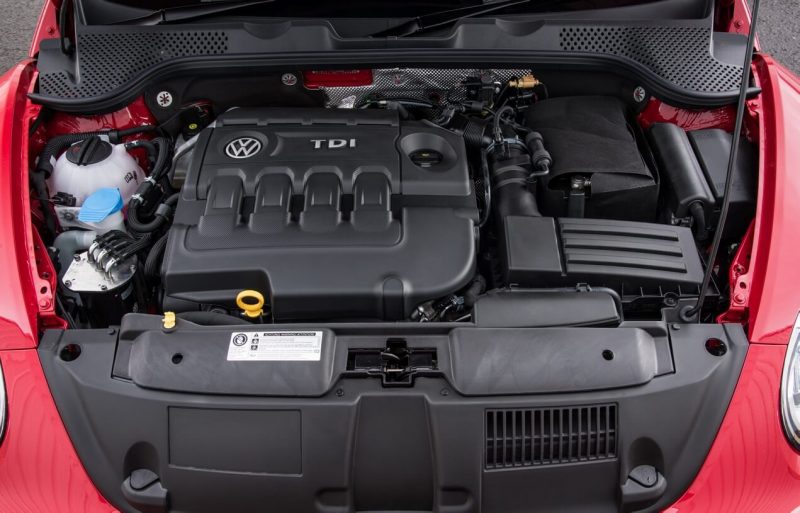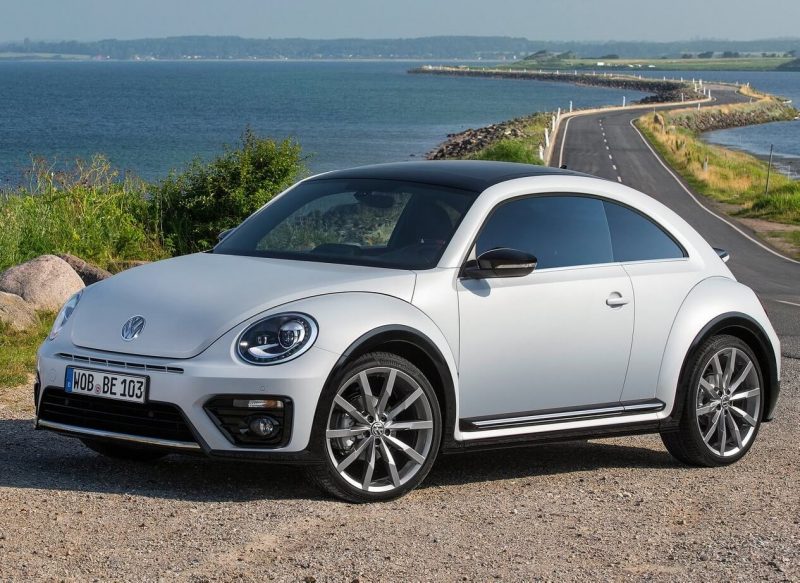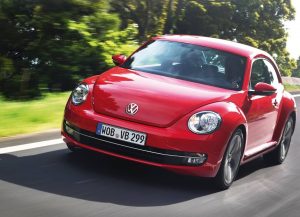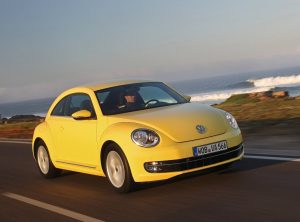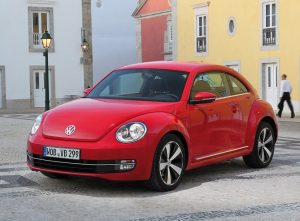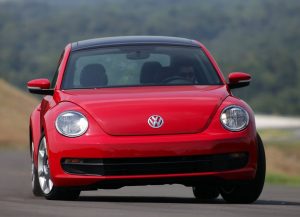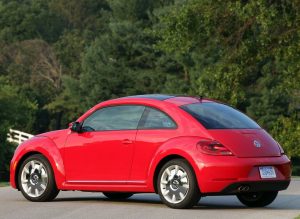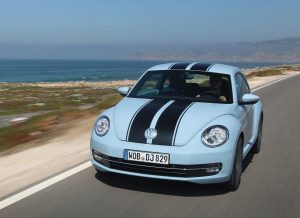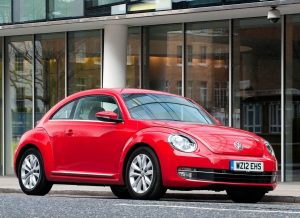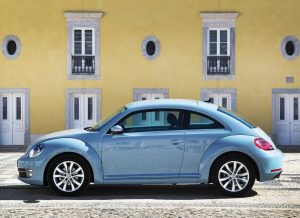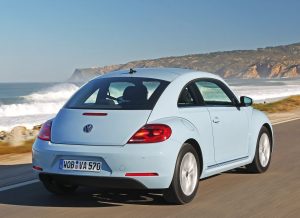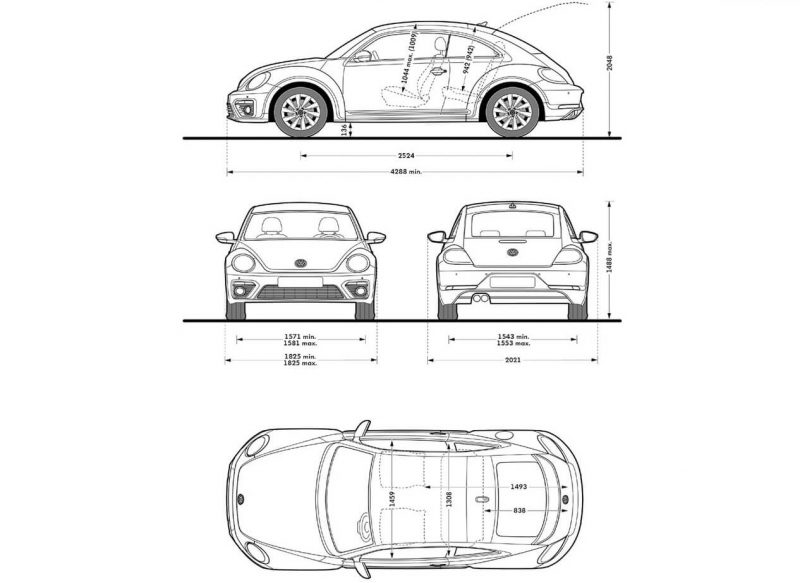Volkswagen Beetle
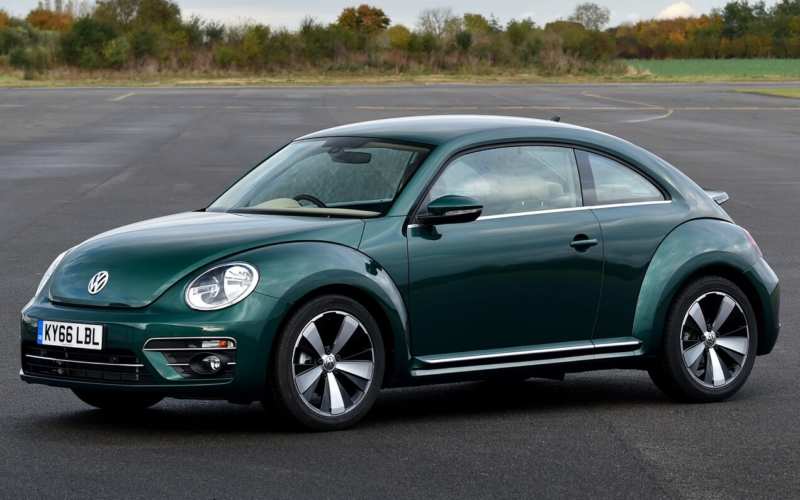

- Car model: Volkswagen
- Producing country: Germany
- Year of issue: 1938
- Body Type: Hatchback, Convertible
Volkswagen Beetle is a cult model of the company “VW”, which was able to become not only a “business card” of German manufacturers, but also a “real icon” of the automotive industry. This front-drive car is a compact class, which has a three-door hatchback and convertible. The given “product” exclusively image and is aimed initially at enough young buyers.
Based on the practice, the model is more bought by women of the beautiful sex. Totally 3 generations of vehicles have been produced. The last family could be seen in the spring of 2011 in the photographs provided by the company. For the whole world, the model Volkswagen Beetle III was officially presented at the motor show in Shanghai in 2011. For Russians, the novelty arrived only in August next year at the Moscow Motor Show. The whole model range is Volkswagen.
- I generation (1938-2003)
- II generation (1998-2010)
- Exterior II generation
- Interior II generation
- Engine
- Transmission
- Running gear
- Safety II generation
- III generation (2011 – present)
- Exterior III generation
- Interior III generation
- Specifications
- Powertrain and transmission
- Running gear
- Safety
- Crash test
- Complete sets and prices
- Reviews from the owners
- Competitors
- The pros and cons
- We sum up
- Volkswagen Beetle 3 photos
- Vehicle drawing
- Test drive
- Video overview
I generation (1938-2003)
The history of the car, as it is considered by some historians, begins in 1925. At that time, a young and gifted Hungarian engineer Bela Barenji was able to provide a drawing of an inexpensive folk car. The scheme of a student of the Vienna Technical College seemed bold and promising.
Having adopted the modern backbone frame as the basis (it existed only on Efekf 11), Bareni decided to install a 4-cylinder engine of the opposite type not in front, as it was in the Czech car, but behind it. It turns out that the car could do without a cardan shaft and a large and uncomfortable transmission tunnel, which is well reflected in the size of the interior decoration.
For the future of the car, he was looking at the bodywork made of solid, aerodynamically shaped metal, which was a very bold decision in those years. Ten years later, these elements were the basis of the unique Volkswagen, but in 1925 the Hungarian engineer had many ideas and not enough money even to draw up a patent application. As a result, the promising drawing was only on paper.
A little time passed and another engineer and journalist with Hungarian residence permit, Josef Ganz, decided to remember this drawing. He was the publisher of the Motor Kritik magazine and did not hesitate to criticize the existing German automotive industry. Ganz criticized the high cost of vehicles and the spiteful attitude to the needs of poor people.
It is worth admitting that the journalist was right, because until the 1930s, only every fifty German had his own car, while in the United States of America the ratio was 1 to 5. Of course, there were famous brands like Maybach, Horch, Mercedes-Benz, Rolls Royce, Bugatti and others, but the Germans had not yet produced a mass car that was as affordable and unpretentious as a Ford T or Citroen A.
But Joseph Ganz was not just a critic, because he was not only an accuser, but also a thinker. He tried to find common ground with the companies that produced motorcycles. That’s why already in 1930, at the expense of Ardie company, it was possible to create an open concept of Ardie Ganz with bodywork.
We have not forgotten about the spine frame, independent torsional suspension and the powertrain located in the stern area. Adler has already had to pay for such a program, which has built a different concept of Maikafer or “May Beetle”. Such a name was given to the car not only because of the similar exterior with an insect, but also because it was presented in May.
It is clear that both versions of the car were fully praised on the pages of Motor Critic magazine. It is worth saying that the printed materials have done their job. Conceptual versions of the journalist were to the liking of the manager of the company, which also specialized in the production of motorcycles. It was Wilhelm Gutbrod.
As a result, in the winter of 1933, the small car Standart Superior, which was built according to the Maikafer scheme, debuted at the German company, but had a neat closed body designed for two people. The aft area of the interior could have a modest trunk or a number of child seats.
There was only one thing to choose from. The “Baby” was equipped with a 2-cylinder 2-stroke four-stroke “engine”, which developed 12 horsepower. The important thing is that the model cost a little more than 1 500 marks. In those years it was a good value.
Volkswagen Käfer (Beetle) has gone down in history as the most mass-produced vehicle, produced without revision of the standard design.
German car appeared in a suitable period, because Hitler came to power, who did not drive the car himself and even, as they say, was afraid of fast driving, but he had a clear craving for cars. Therefore, in his garage it was possible to find various vehicles from Alpha Romeo and Horch to Tatra and Mercedes-Benz. Adolf wanted to start mass construction of high-speed roads.
In order to prevent them from getting empty, vehicles were needed, and this was a priority task for the German leader. After watching the Standart Superior during the Berlin Motor Show, Hitler was satisfied, based on eyewitness accounts. Everything was supposed to be fine, because with state support, a small car could reach unprecedented heights, while the Standard company had only modest possibilities, which would not be enough for mass production of the car.
Sad as it may seem, everything happened in reverse order. It is no secret that Adolf did not love Jews, and Ganz was just that, so given the new regime, he had no chance to be the main German car designer. A little later, leaving the Gestapo’s oppression, he had to leave Germany and settle down in Australia.
When the war is over, Ganz will assure everyone that in the 31st Ferri Porsche, who was Ferdinand’s son, was staying in Frankfurt to test the “May Beetle” with his own hands. Based only on this, Joseph was sure that the exterior of the unique Volkswagen was actually his property, not the Porsche.
But he remembered that his car was also suspiciously similar to the design of Béla Barenis, which he proposed in 1925. Anyway, neither Ferdinand Porsche nor his son thought about any model of Volkswagen. Their company, which was recently established (called the Engineering Bureau of Dr. Porsche), took on each job.
The debut order was received by the motorcycle company Zundapp, which decided to enter the car light. The car received the code name type 12 and was much better reminiscent of a promising Volkswagen than the previous Standard Superior. However, after reflection, the company’s management decided to focus only on the production of motorcycles, and the promising project was no longer funded.
After a while, the NSU company thought about the production of a serial type machine. The new Type 32 version was able to retain the recognizable body features of version 12, but was slightly larger. The engine room behind the rear axle had a 4-cylinder, air-cooled engine. Sorry, but this project could not go into production.
When 1932 came, the NSU decided to sell the FIAT automotive division and withdraw from the participation. But the materials for Zundapp and NSU were able to convince Porsche of the bright future of the model, so he decided to try. At first, Ferdinand was able to create the conditions for a promising “folk car” personally. Based on his words, the car should be unpretentious and practical.
Therefore, he decided to use an air-cooled motor, which greatly simplified the operation. In those years there was no antifreeze and garages that would be heated, was very little. Nobody wanted to set records for capacity. It was necessary to have a couple of adults and 3 children inside the novelty. There was a simple luggage compartment.
In addition, a simplified version promised a fairly acceptable price tag, which could significantly increase the demand for the novelty of German production. The manager calculated that the price should not exceed 1,500 marks in serial production.
In the first month of 1934, Ferdinand handed over his “sketches” to Berlin so that they could be considered by the highest authorities of the country. After a thorough study of Ferdinand’s documents, Adolf decided to invite him to his house to suggest that he work on the concept of the folk machine. Among the list of conditions the German leader did not make any amendments, except for the cost of the model, which should not have exceeded 1,000 German marks.
To better understand what thoughts Dr. Porsche might have had, it is worth reminding that 1,000 marks was worth the motorcycle at the time! In addition, if the doctor decided to sign the contract, after 10 months Ferdinand should have shown two prototypes so that they could be thoroughly studied by RDA experts. It was in their hands that the fate of the car was to follow.
It is difficult to understand what the doctor thought about, because working under the invitation of the Fuhrer, in addition to an interesting project, was very attractive. However, the head of the country and RDA made unrealistic demands. It is worth adding a very cutbacks of 200,000 marks. In the summer (June 22) of 1934, the Porsche agreed to this contract.
The debut 3 versions of the vehicle under the name “Type 32” were assembled in 1935. Interestingly, the doctor still could not meet the deadlines and the budget provided. As a result of the work, it took a whole year, and the costs were about 4,000,000. In its structure, the model resembled a commercial version, where you can see the rear-motor layout, torsional-lever chassis and 4-cylinder power plant.
A couple of years later, the Daimler-Benz company was able to assemble an experimental batch of 30 test runs. The final version of the first generation Beetle was presented in 1938. The car had an open or closed body with a 4-seater interior design. The body was made of a wooden frame, which was covered with metal panels.
The bottom of the plywood floor was attached to the ridge frame. Volkswagen Beetle I had a solid bottom, a gasoline four-cylinder, air-cooled opposed engine and a volume of 985 “cubes”. Developed such an engine with 24 horsepower and all the torque transmitted to the rear axle by means of four-stage “mechanics”. The suspension was of torsion type both in front and rear. All wheels were equipped with drum brakes. The “German” was well received by the people, however, all targets were interrupted by the Second World War, so Volkswagen Tour 1 began to produce in the conveyor type in 1946.
In the course of time, the VW Beetle 1 generation was improved, despite the fact that its structure has not undergone changes in the entire life cycle of the machine. In different years, the unique compact model was equipped with four-cylinder “engines”, which received a carburetor power system. They had volumes of 1.2, 1.3, 1.5 and 1.6 liters, and produced from 34 to 50 “horses”. The most recent versions were injected 1.6-liter engines, which produced 50 horsepower and 98 Nm of rotational force.
In addition to the box on the “mechanics” there were versions with 3- or 4-speed semi-automatic transmission. The most popular Volkswagen Beetle 1 generation received in the 1960s. Then the model was exported to more than 80 countries, which can be attributed to the United States of America. In addition to Germany, the car was assembled in such countries as Brazil, Yugoslavia, Mexico, South Africa, Belgium and Nigeria.
When the year 1971 came, German specialists released a restyled version of the car, which differed from the standard model installed in front of the suspension McPherson and extended “nose”. The novelty was named VW 1302 and VW 1303. Among the ordinary people it was called Super Beetle.
It is necessary to recognize that the production of this modernized car lasted only 5 years, after which only the standard sedan and convertible with cloth top were left in the list. However, everything was not as smooth for Beetle as it seems, because by the 1970s the model was morally outdated and had many negative qualities, such as excessive rotation, high sensitivity to side wind, inefficient heating of the interior and susceptibility to corrosion of tubular thresholds.
As a result, the car ceased to be popular, after which the Volkswagen company even almost went bankrupt, but the situation was saved by the new models with a front drive, so the production of cars continued. We finished producing Volkswagen Beetle of the 1st generation on July 30, 2003 – just that day in Mexico the last model of the famous car was released. Europe and North America said goodbye to the classic car much earlier – in 1985 and 1977, respectively.
Interestingly, a total of 21,529,464 copies of the VW Beetle I generation were sold worldwide (this includes 330,000 models in the body of the convertible).
II generation (1998-2010)
At the beginning of 1994 (January), during the international Detroit show, the VW company demonstrated its prototype under the name Concept 1, which after 4 years began to produce under the name New Beetle. The car is the successor of the famous classic car “Beetle”.
When the year 2005 came, the vehicle survived the planned restyling, which was able to improve the appearance, interior design and power range. Serial production of Volkswagen Beetle 2 generation continued until 2010.
Exterior II generation
If you look at the exterior of a German car, it looks pretty and original. This is partly due to the stylistic similarity with its direct known “parent”. There are wide muscular wings, rounded front and stern lighting, high “dome” roof and relief bumpers. The car is beautifully folded, so there is nothing to pick on.
Volkswagen New Beetle is in the list of “golf class” cars, which is presented in the body of the 3-door hatchback and 2-door convertible with a soft top. Such a vehicle has bypassed the whole world, and everywhere was a great success. For the elderly, the novelty resembled the years of youth, and the young people took the “big toy” in the style of the old “Beetle” as a kind of boom in bodybuilding. The new Volkswagen Beetle of the 2nd generation was designed on the basis of the Golf IV family model.
Interior II generation
Speaking about the interior of Volkswagen New Beetle II generation, it is necessary to say that it looks qualitative, however, a little bit boring, mainly on the background of the exterior. You can notice the Spartan dashboard with a semicircular speedometer sensor and digital odometer, a heavy steering wheel, where there are three “aluminum” spokes, as well as a massive front panel, crowned in the central area of the tape recorder and control unit “climate”.
The interior of the car has ribbed plastic, diluted inserts “under aluminum” and painted on the body color plastic panels. There is plenty of space for those sitting in front, despite the modest size of the car. As the model has an unusual shape of the roof, there is enough space above the head.
I am glad to see that the seats are well profiled and have good lateral support and wide adjustment ranges. People of almost any size can sit down in comfort. The front dimensions cannot be viewed at all, the windshield is very far from the driver.
It is logical that there is not much space in the rear row. Everything is due to the sloping roof, which presses on the heads of people even of medium height. Luggage compartment of Volkswagen New Golf has from 214 to 769 liters, depending on the position of the back of the sofa. A little upset that the new Veetledazhe is inferior in size to the trunk of its predecessor.
It is noteworthy that the rear sofa can be placed as a whole almost in a flat floor. The convertible version is no longer as practical as it has only 198 litres of storage space in the trunk.
Engine
Volkswagen Beetle second generation has a wide range of engines and gearboxes. Gasoline “prefabricated” is represented by 4-cylinder in-line atmospheric engines that support distributed fuel injection. Their volume starts from 1.4 and ends with 2.0 liters, and they give out from 75 to 115 “horses” and 126-172 Nm of rotating forces.
There is a 1.8-liter turbo version, which already produces 150 horsepower and 220 Nm of torque. In addition, the range of “engines” has five-cylinder inline and V-shaped units, the volume of which begins with 2.3 and ends with 2.5 liters. Such engines develop 150-170 “mare” and 220-228 Nm of peak thrust. Diesel lineup is represented by 4-cylinder in-line turbocharged engines with a volume of 1.9 liters. They produce 101-105 “hooves” and 240 Nm of rotational potential.
Transmission
The engines are equipped with five-stage mechanical gearboxes, four or five-speed automatic gearboxes and a 6-range robotic gearbox, which transmits all efforts to the front wheels. Gasoline versions allow the vehicle to reach the speed mark of 100 kilometers per hour in 8.7-14.6 seconds, and the maximum speed of 161-211 kilometers per hour.
Average consumption is from 7 to 8.9 liters in mixed mode. Power units powered by diesel fuel are accelerated to the first hundred in 11.5-12.4 seconds, the maximum speed is 178-180 kilometers per hour. They “eat” much less – 5.1-5.5 liters in a combined cycle.
Running gear
For the basis of the second generation they decided to take the chassis with front drive “PQ34”, where there are independent stands of McPherson in front and a semi-independent suspension on the longitudinal arms, connected with an elastic cross beam at the back. The machine has a rack and pinion control system, which is complemented by a power steering system. There is also a brake system with disc brakes on all wheels with ABS and EBD.
Safety II generation
The car is safe and sound. It has four airbags (a couple of them are mounted in the back of the seats in case of side impact), electric windows, central locking, heated exterior mirrors with electric drive, ABS, electronic traffic stabilization system. The advantages of the model include bright and unusual appearance, solid equipment, good dynamics, acceptable service, low fuel consumption and reliable design.
I am pleased with the quality of assembly, modest dimensions that are ideal for urban conditions, minimal gaps between the doors and body panels. What is missing are higher ground clearance, free space in the rear seat and softer suspension. Also the car costs a lot in the market of cars of the former use.
III generation (2011 – present)
The third division of the popular Volkswagen Beetle, which has lost the prefix “New” in the back of the hatchback was officially presented on April 18, 2011 on 3 continents – Shanghai, New York and Berlin. October next year allowed to demonstrate in Los Angeles an open version of the novelty, which received the prefix Cabrio.
The car with the index “A5”, if compared with the previous generation, has become more massive in size and is now better equipped with modern electronics. But it is pleasant that the model could save family features of its famous ancestor. The German company decided to update the latest model. German specialists were able to change the appearance of the car and improve their salon, as well as expand the list of available equipment. The official presentation took place at the Paris Motor Show in 2016.
Exterior III generation
The appearance of Volkswagen Beetle is completely similar to its ancestor. The design staff of VW was able to try in all elements to repeat the lines, contours and bends of the legendary car. The nose area of the car has clearly marked round headlights with xenon filling, which are placed on the sculptural wings – wheel arches.
The front lighting system has fashionable LED running lights in the number of 15 bulbs, received the form of a crescent moon. The bumper got a slot in the air intake across the entire width of the hatchback, and the fog lights, along with direction indicators, are located in its outermost areas.
It is important that the engineering staff made a single-lane radiator grille, first of all, to improve the appearance and dynamic parameters, than to blow the power unit. The bottom of the bumper was divided into 3 areas. The central part has a large grid for blowing the power plant, it also has sensors and radars for security services of the machine.
In contrast to the selected version, the lower or central part of the grille is decorated with a chrome strip. The hood has acquired a semicircular shape, falling down to the ground. On it you can see the nameplate Volkswagen. The optics in front of it have been modified. The LED lighting technology is now used as the basis.
As for the shape, the optics preserved it, however, from the outside began to install an LED strip with round elements. This strip serves as an OE, and around the perimeter of the workers have already set a familiar strip of chrome, to better emphasize the optics. The VW Beetle III generation side part consists of a visual radius, which includes a front arch, stern arch, roof dome from the beginning of the front glass to the bottom of the luggage compartment door, as well as a hood. All such rounded elements were softly and proportionally connected in a bright image.
With the help of a high window sill line, the car gets a rapid character. Many motorists will love the side windows, which have no frames, as well as the chrome-plated threshold-holding. The side of the car takes a couple of new inserts. The previous generation simply did not have them. In the novelty the inserts are made not only for decorative purposes, but also to improve aerodynamics.
The upper part of the insert has been placed under the LED-type direction indicators, and the lower part has round LED fog lights. Previously, direction indicators were installed on the side of the front wing, and the bumper had a larger size, if you compare the new product with the new generation.
There are 17- or 18-inch wheels installed. As a separate option, 19-inch rollers with low-profile rubber can be supplied. Side mirrors remain almost unchanged, which the design team decided to modify and give an elongated shape. The lower part was decorated with black gloss and the upper part with body color. The center was equipped with massive and pancake repeaters of turns.
Drivers will be pleased that the side mirrors have a function of heating, electric adjustment, automatic folding and memory for several positions.
The back part received a monumental bumper, a neat third door and a nice lighting equipment with LEDs. Body colouring is represented by twelve shades. For example, there is a bright yellow, sky blue and snow-white. The rear mounted anti-wing now has an increased area and a different size. The exhaust pipes look out carefully. Designers assure that there is nothing left from the previous version, there are only new ideas. At the first inspection you agree with this, but the nose part still shows the real roots. Despite the fact that the headlights received bixenon and 15 LEDs, they have not lost their genetic form from their ancestors.
The wings no longer have the same smoothness and received fashionable flat curbs. Straightened door images became more rounded. The whole front part became more sporty, so it is not for nothing that some people compare it with the Porsche. But there is something in this, because the famous Ferdinand was not the last person in the development of debut projects.
Interior III generation
The interior of the new family, in spite of some peculiarities in style, can be called classic at once. But it is necessary to recognize that modern technologies are still present in the car, despite the rather simple design. A massive and slightly trimmed in the lower part of the truck is presented to the driver at once a multifunctional three-spoke steering wheel, as well as an informative and modest “dashboard”.
There is still a large speedometer in the central part with a monochrome screen, tachometer, placed to the left and fuel level sensor, which occupies the right side. Despite the semicircular shape of the panel, it can be viewed well and conveniently, and it is not overloaded. In the left part of the panel there is a round air duct, adjustment of lighting devices and a wheel of adjustment of brightness and inclination of optics.
As for the steering wheel, it is of a simple type and made of leather. On 2 spokes engineers placed the keys of multimedia destination, which includes the control of mobile communication. To feel behind a “steering wheel” of a sports car pair of transmission petals placed behind a steering wheel which are used in a sports mode of driving will help. Paying attention to the beautiful torpedo, you can notice the control units of multimedia and climate systems. Volkswagen Beetle saloon of the 3rd generation was made of rigid plastic, which can be optionally “revived” by massive inserts under the body color.
Engineers have been able to improve existing systems by upgrading or replacing them with new ones. Most of all, the Volkswagen Beetle 3 front panel features a colorful plastic insert, which can also be found on the doors and steering wheel. The top of the panel in the basic version can already be seen in a small notch, and the charged versions have a set of 3 sensors: turbine pressure, oil temperature, and in the center of the multifunction stopwatch for fans of sports races. Under this niche is the 6.3-inch multimedia system mentioned above.
It can be equipped with Android Auto, Apple CarPlay or MirrirLink. On the sides are located control buttons, a slot under the memory card and a slot under the “SIM card”. If previously the control unit 2-zone “climate” was controlled by mechanical handles, now there is a digital panel. A pair of modest monochrome screens are installed on the sides, allowing convenient reading of information. The upper part of the unit has a panel of buttons, where there is a function of seat heating, air flap and adjustment of the direction of the climate system. Below are the keys to setting up the safety system. As there is a little space near the transmission switch, experts have installed a USB, 12V and wireless charging.
There is a Start/Stop button and a cigarette lighter next to it. There are a pair of cup holders and a mechanical handbrake between the first row seats. The fresh VW Beetle 2017 panel has a classic and sporty style. The front seats have a comfortable profile. In addition, they are equipped with dense upholstery, good side support and a sufficient set of settings. As a material, they decided to use a quality fabric with different patterns and stitching of different colors.
In addition to the fabric upholstery, there is a leather trim in black, gray or beige. It is nice that the owner can choose the color of the front panel according to his preferences. The second row was adjusted for 2 people, however, even they will feel a small free space in the legs and above the head. It is clear that the luggage compartment does not have record volumes – only 310 liters (convertible version received 225 liters). At the same time, if necessary, it is possible to fold the backrests of the rear seats in the proportion of 50/50, which will provide 905 liters of useful space.
A compact spare wheel can be found in the raised floor section of a German car. Speaking in general, the interior of the new Volkswagen Beetle 2017 has not undergone much of a global change. It would be more correct to say that it has been upgraded for the better. Such a car is suitable for both active and quiet customers.
After the last update the salon remained simple and functional, everything is on its usual places. The Design version has twelve colors of interior decoration upholstery. As you know, the front panel of the updated Volkswagen Beetle III generation has a block of dials showing the speed, speed, speed of the power unit, oil temperature, stopwatch for fans of racing and indicator of pressure supercharging.
Specifications
Powertrain and transmission
Taking into account all the time of production of the popular machine, the company has changed dozens of different power units. Despite the selected body of the new Volkswagen Beetle 2017, they have the same engine. As a choice, there are a couple of petrol engines and a couple of diesel engines.
This list begins with a gasoline four-cylinder 1.2-liter version of the TSI, which can develop 105 horsepower and 175 Nm of torque. The work of such “engine” with six-speed manual or seven-speed automatic transmission DSG is synchronized.
The drive transmits only to the front wheels. The maximum speed of the VW Beetle 2017 vehicle varies from 177 to 180 kilometers per hour, and to reach the mark of 100 km/h it will take 10.9 seconds for the mechanical gearbox and 11.3 seconds for the “automatic” gearbox.
Gasoline consumption depends on the transmission – mechanics requires 6.7 liters per every hundred in urban mode, outside the city 4.7 liters, and a combined mode of 5.5 liters. The automatic box also allows the use of 4.7 liters on the road, and the urban cycle is more economical – 6.1 liters. Combination mode requires 5.2 liters per 100 kilometers. This equipment promises a car from 1,750 to 1,780 kilograms of weight.
Then comes the second gasoline 1.4-liter, 160 hp TSI power plant. The limiting torsional forces are 240 Nm. Such “engine” works together with a mechanical six-speed transmission. It is logical that if the power has increased, the maximum speed of 203 km/h will be increased. It is possible to accelerate up to 100 km/h within 8.3 seconds. The engine consumes 7 liters in the city, 4.9 liters in the country and 5.7 liters in the combined mode.
The “top” variants of cars have a “direct” 2.0-liter unit, which received a turbocharger system. This engine develops 210 horsepower at 5 300-6 200 rpm and 280 Nm of rotational force at 1 700-5 200 rpm. Such a power plant was synchronized with a six-speed robotic gearbox, which promises a maximum speed of 227 kilometers per hour. Acceleration to the first hundred will be 7.3 seconds. According to the manufacturers, this engine consumes about 7.6 liters of gasoline in a combined cycle.
The list of diesel-powered engines starts with the 2-liter 110 hp TDI engine, which received a maximum torque of 250 Nm. Together with it works five-speed mechanical or seven-speed automatic DSG box. The car accelerates up to 182 kilometers per hour, and the first hundred is reached in 11 seconds. If we compare the diesel version with the gasoline one, the first one is less voracious. In the city this indicator is at the level of 5 liters, in the countryside it falls down to 3.9 liters, and the combined mode is 4.3 liters. Gross weight of such a model is 1,860 kg.
After that there is a 2-liter 150 hp TDI diesel engine with maximum torque of 340 Nm. Together with it a six-speed mechanical or automatic DSG box is installed. Maximum speed is 198-202 km/h, and acceleration up to 100 km/h will take 8.9-9.2 seconds. If we compare the consumption of diesel fuel with the aforementioned “engine”, the 150 hp version in the city requires 5.4-5.7 liters, in the country 4.1-4.4 liters, and the combined cycle will be 4.5-4.8 liters. The curb weight of such a car is 1,890 kg.
Running gear
The third generation of Volkswagen Beetle was built on a front-driven modular “cart” A5 (PQ35), where the power unit is placed crosswise. There is also an independent suspension on both axles, expressed by McPherson’s racks in front and multilever system at the back.
The compact machine is easy to operate thanks to the variable-volume electrical amplifier. Disc brakes on all wheels are used as the brake system. ABS, EBD, EP and HBA systems are supported.
Safety
From the very beginning of the production of the world-famous machine to the present day, the engineering staff has improved and improved safety systems. The novelty of 2017 has the most modern systems developed by the company and beyond. Which electronics will be used in a particular model will depend on the equipment.
Active and passive safety systems Volkswagen Beetle 3 generation can include the presence of: airbags for two rows of seats, tracking blind spots, monitoring the movement behind the car, a circular view, navigation system, immobilizer, LED running lights, adaptive front optics, emergency braking, powertrain shutdown in an accident, fastening ISOFIX, ABS and ESP.
To increase the convenience of the owner and passengers of the new Volkswagen Beetle 2017, the developers have applied a system of adaptive cruise control, telescopic steering wheel, keyless access to the car, tire pressure control system, door closers, parktronic and parking assistant.
In addition to the already mentioned security and comfort services, the model became better with the help of modernized bodywork and more reliable door frames. As technologies do not stand still, the company will add new security systems and add them to the list of options as they are received and developed.
Crash test
Complete sets and prices
By default, Volkswagen Beetle 2018 has six airbags, air conditioning, front seat heating, antilock system, full glazing, automatic brake in emergency situations and a small number of assistants.
In addition, there is a multifunctional screen Plus and black protective moldings with a chrome strip. The basic version is estimated from $16907. In addition to the $3074 you can install a parking assistant, several circular cameras, cruise control, advanced multimedia and audio system, as well as navigation. The most charged version is estimated at $230555.
The Beetle Design version has fog lights and 16-inch Whirl alloy wheels. Cars with a 1.4-liter TSI engine offer electronic differential lock (XDS system). In addition, a combined aft spoiler, body-coloured torpedo pads and chrome elements in the ‘appliance’ finish can be fitted.
The Beetle Sport version already has front sports seats with lumbar support, leather trim gearbox lever and parking brake, special door upholstery and 17-inch light alloy “rollers”.
Reviews from the owners
Based on the words of the owners, it can be noted that “Beetle” is a mobile, dynamic car, which is much easier to find free parking space in the parking lots. In our country, there are not so many such models, so it is clearly possible to stand out from the crowd. Many people note the pleasant sound of the power unit, high-quality standard acoustics, a couple of cigarette lighters, petals, comfortable seats.
Interestingly, some even use the vehicle for five tall people. The driver feels like in a sports car. Of course, women buy cars more often, but there are also male drivers. The model amazes with its unusual design, spaciousness and practicality.
The luggage compartment, though not record-breaking in volume, but allows you to take everything you need with you. Drivers include pleasant and simple operation, low fuel consumption, reliability, thoughtfulness in details. The suspension is almost not killable, and the car itself is inexpensive to maintain.
The disadvantages include low ground clearance height, slightly rigid suspension, absence of a rear camera in basic equipment. The car does not like a track, even a small one, so in winter it is very difficult to get out of it.
The back door of the luggage compartment is large and heavy, when you close it, all sitting like stunned. Also in winter, the fuel tank hatch is heavily covered with ice. Glasses have a bad tendency to scratch. It will be uncomfortable for tall people to sit on the back row.
Competitors
The German vehicle does not have many opponents, but it does have them. This can include Citroen DS3, which is a supercar in the form of a small hatchback, Fiat 500, representing the classics in a new “suit”, Mini Cooper, a direct competitor to the German and Smart ForFour, a compact machine designed for four people.
The pros and cons
Pluses cars
- Original appearance of the car;
- Pleasant exterior;
- Modest dimensions of the car;
- The latest generation has improved light optics;
- Good aerodynamics;
- Not bad data on safety;
- Stylish interior;
- Not bad assembly;
- Quality salon;
- Comfortable seats;
- Inside there is enough free space;
- There is a touch screen on the central console;
- Rich history of the model;
- Multifunctional and comfortable steering wheel;
- Small fuel consumption;
- There is a choice of power units;
- Various modifications are provided, including with the open top.
Cons of a car
- The second row of seats is not as comfortable for adults;
- Small luggage compartment;
- Small price tags;
- A little bit hardish pendant.
We sum up
Despite its long history and several new generations, VW Beetle was able to retain its hereditary recognition. The designers were able to work well on the third generation, significantly improving it not only externally, but also in the electrical stuffing.
The new hatchback Volkswagen Beetle 2017 has a unique appearance, small size, new light optics and stylish wheels. The car is simply designed to travel in dense urban traffic. Getting inside, all the pleasant emotions do not go anywhere, and it’s nice! Everything is located conveniently and clearly, all devices are easily readable.
Ergonomics at the highest level. All the details and bodywork elements are on the conscience. The central console is crowned with a colour touchscreen display, on which all the necessary information about the vehicle can be displayed. The seats are comfortable and have good side support. There is enough space for the people sitting in front of the car, which is impossible to say about the second row.
Only a couple of people will be able to stay there, and not with the proper level of comfort. The luggage compartment does not have a record volume, but it is quite enough to take with you every day all the necessary things. Germans have always tried to provide their cars with the proper level of safety, so VW Beetle is clearly no exception.
That’s why this model can be safely offered to family people. The range of power units allows you to choose the right engine for each customer. The engines consume not so much fuel, so “Beetle” can be again advertised for urban driving. Cars can hardly be called sports cars, but when overtaking the driver feels confident, so the dynamics of this car is clearly not in last place.
Many drivers will be pleased with the reliability of the hatchback, which allows you to be fully focused only on the road. Having bought this model, the owner will be able to stand out from the surrounding crowd. Thanks to the latest improved generation, “Beetle” can continue to successfully compete with other cars, winning their hearts and respect.
We advise you to read the article: Volkswagen History

